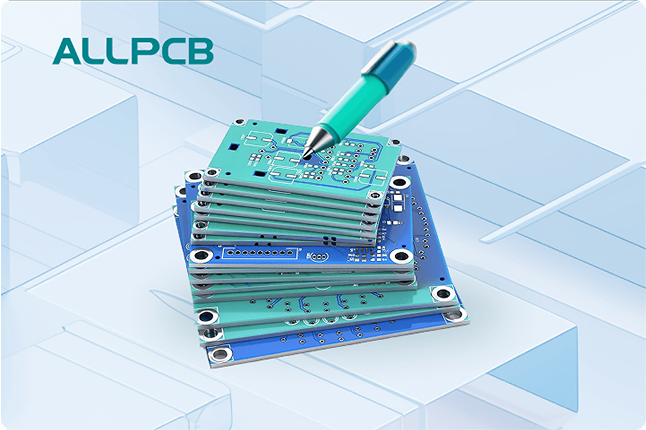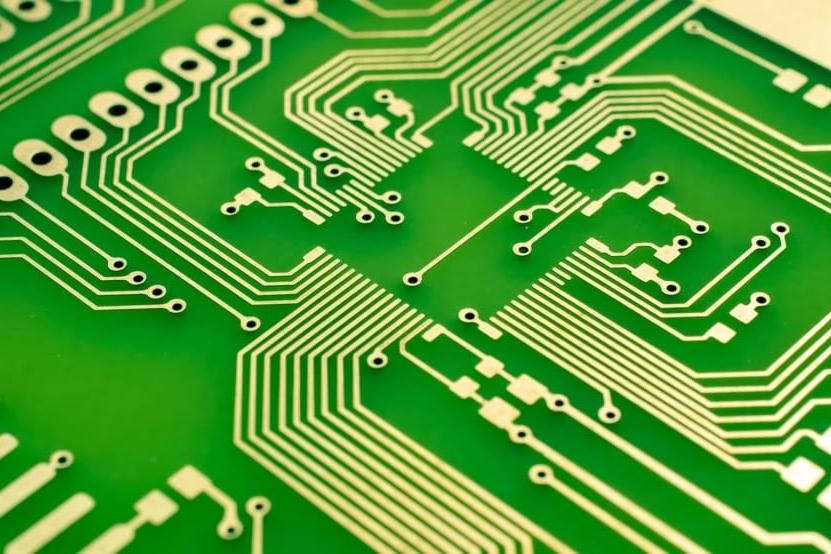In the fast-paced world of retail display technology, creating printed circuit boards (PCBs) that are efficient to produce and reliable in performance is crucial. Design for Manufacturability (DFM) plays a vital role in achieving this balance. If you're searching for retail display PCB DFM guidelines, solutions to PCB manufacturing defects, or ways of optimizing PCB design for retail display assembly, you're in the right place. This blog post will guide you through the essentials of DFM tailored specifically for retail display PCB production, helping you reduce costs, minimize errors, and streamline assembly.
At ALLPCB, we understand the unique challenges of designing PCBs for retail displays, from ensuring durability under constant use to meeting tight production deadlines. Let's dive into the principles of DFM and explore actionable strategies to enhance your PCB projects.
What is Design for Manufacturability (DFM) in PCB Production?
Design for Manufacturability (DFM) is a set of design practices aimed at making a product easier and more cost-effective to manufacture without compromising quality. In the context of retail display PCB production, DFM focuses on creating board designs that reduce manufacturing defects, simplify assembly, and ensure the final product performs reliably in retail environments.
Retail displays often require PCBs to power LED screens, interactive touch panels, or digital signage. These applications demand precision, durability, and often compact designs to fit within sleek display units. By incorporating DFM principles early in the design phase, you can avoid common pitfalls like component misalignment, soldering issues, or signal interference that could disrupt display performance.
Why DFM Matters for Retail Display PCBs
Retail display PCBs face unique challenges. They must operate continuously, withstand environmental factors like temperature fluctuations in store settings, and often need to fit into tight spaces. Without DFM, manufacturers may encounter issues such as:
- High production costs due to complex designs.
- Delays from frequent design revisions caused by manufacturing errors.
- Performance issues like signal loss or overheating in compact display units.
DFM addresses these challenges by aligning the design process with manufacturing capabilities, ensuring smoother production and a higher-quality end product. Let's explore specific retail display PCB DFM guidelines to achieve these goals.

Key Retail Display PCB DFM Guidelines
Following DFM guidelines can significantly improve the manufacturability of PCBs for retail displays. Below are actionable tips tailored to this niche, focusing on design simplicity, component selection, and assembly optimization.
1. Simplify Board Layout for Efficient Manufacturing
A cluttered or overly complex PCB layout can lead to manufacturing errors and increased costs. For retail display PCBs, aim for a clean design that minimizes the number of layers and traces where possible. Keep these points in mind:
- Place components on one side of the board when feasible to reduce assembly time and cost.
- Avoid tight spacing between components. Maintain a clearance of at least 0.1 inches (2.54 mm) to prevent soldering issues during assembly.
- Use standard trace widths (e.g., 6-8 mils for signal traces) to ensure compatibility with common manufacturing processes.
Simplifying the layout not only reduces PCB manufacturing defects but also speeds up production, which is critical for meeting retail project deadlines.
2. Choose Components with Manufacturability in Mind
Component selection is a cornerstone of DFM. Retail display PCBs often require components like LEDs, microcontrollers, and power regulators. To optimize for manufacturing:
- Select components with standard package sizes (e.g., 0805 or 0603 for resistors and capacitors) to ensure availability and ease of placement.
- Avoid obsolete or hard-to-source parts that could delay production.
- Consider thermal management by choosing components with appropriate power ratings to prevent overheating in compact display enclosures.
For example, if your retail display PCB drives an LED array, ensure the LED components have consistent forward voltage (typically 2-3.3V) and current ratings (around 20mA) to avoid uneven brightness or circuit stress.
3. Optimize for Signal Integrity in High-Density Designs
Retail displays often involve high-density PCB designs to fit within slim frames. However, dense layouts can cause signal interference or crosstalk, especially in applications like touchscreens or high-refresh-rate screens. To maintain signal integrity:
- Keep high-speed signal traces (e.g., for HDMI or USB interfaces) short and direct, with impedance controlled at 50 ohms for single-ended signals.
- Use ground planes to reduce noise and provide a stable reference for signals.
- Separate analog and digital circuits to minimize interference, especially in displays with audio output.
By addressing signal integrity early, you can prevent costly redesigns and ensure the display performs reliably in a retail setting.

4. Design for Automated Assembly
Most PCB production for retail displays relies on automated assembly processes like surface-mount technology (SMT). Optimizing PCB design for retail display assembly means ensuring compatibility with these machines:
- Provide clear fiducial markers on the board (at least three per side) for precise machine alignment during placement.
- Ensure component orientations are consistent (e.g., all diodes facing the same direction) to avoid placement errors.
- Include sufficient board edge clearance (at least 5 mm) for handling during automated assembly.
These steps reduce the risk of misalignment or defective soldering, which are common PCB manufacturing defects in automated production.
Common PCB Manufacturing Defects in Retail Display Production
Even with careful design, manufacturing defects can occur if DFM principles are not fully implemented. Here are some frequent issues in retail display PCB production and how to mitigate them through design.
1. Soldering Defects
Soldering issues like bridging (solder connecting adjacent pads) or tombstoning (components standing upright) are common in high-density designs. These defects can cause short circuits or non-functional boards in retail displays.
- Solution: Design stencil apertures with a 10-20% reduction in paste volume for small components (e.g., 0402 packages) to prevent excess solder.
- Solution: Ensure pad sizes match component footprints per IPC standards (e.g., IPC-7351) for proper solder flow.
2. Component Misalignment
Misaligned components can lead to poor connections or complete failure of the PCB. This is a risk in retail display PCBs where compact layouts leave little room for error.
- Solution: Use automated optical inspection (AOI) compatible designs by placing components with clear visibility for inspection cameras.
- Solution: Include silkscreen markings to indicate correct component placement and orientation.
3. Thermal Stress and Overheating
Retail displays often run for extended periods, generating heat that can stress PCB components. Overheating can degrade performance or cause premature failure.
- Solution: Add thermal vias under high-power components (e.g., power ICs) to dissipate heat to a ground plane.
- Solution: Specify copper thickness (e.g., 1-2 oz/ft2) for power traces to handle higher currents without overheating.

Optimizing PCB Design for Retail Display Assembly
Beyond avoiding defects, DFM also focuses on making the assembly process as seamless as possible. Retail display projects often involve high-volume production, so efficiency is key. Here are strategies for optimizing PCB design for retail display assembly.
1. Panelization for High-Volume Production
Panelization involves arranging multiple PCBs on a single panel for simultaneous manufacturing. This is especially useful for retail display projects requiring hundreds or thousands of boards.
- Design panels with V-scoring or tab-routing for easy separation after assembly.
- Include tooling holes (typically 3.2 mm diameter) on panel edges for secure fixturing during production.
Effective panelization can reduce production time by up to 30%, lowering costs for large-scale retail display deployments.
2. Testability in Design
Ensuring your PCB can be tested easily during and after assembly prevents defective units from reaching retail stores.
- Add test points for critical nets (e.g., power and ground) with a minimum diameter of 1 mm for probe access.
- Design for in-circuit testing (ICT) by placing test pads on a 0.1-inch grid for compatibility with standard test fixtures.
These features allow manufacturers to catch issues like open circuits or incorrect component values before the PCB is installed in a display unit.
3. Documentation for Assembly Precision
Clear and detailed documentation is a critical yet often overlooked aspect of DFM. For retail display PCB assembly, provide:
- A bill of materials (BOM) with manufacturer part numbers, quantities, and package types.
- Assembly drawings showing component placement and orientation.
- Fabrication notes specifying tolerances (e.g., ±0.1 mm for board dimensions) and surface finishes (e.g., ENIG for corrosion resistance).
Comprehensive documentation minimizes miscommunication between design and manufacturing teams, ensuring the final product matches your vision.
Benefits of Implementing DFM in Retail Display PCB Production
Adopting DFM practices offers several advantages for retail display PCB projects. These benefits extend beyond the manufacturing floor to impact your bottom line and product reliability.
- Cost Reduction: Simplified designs and fewer defects lower production and rework costs.
- Faster Time-to-Market: Streamlined manufacturing processes reduce lead times, allowing you to deploy displays sooner.
- Improved Reliability: Designs optimized for signal integrity and thermal management ensure consistent performance in retail environments.
- Scalability: DFM makes it easier to ramp up production for large retail rollouts without sacrificing quality.
Partnering with ALLPCB for DFM Success
At ALLPCB, we’re committed to helping you achieve flawless retail display PCB production through DFM principles. Our team offers comprehensive design reviews to identify potential manufacturability issues before production begins. With advanced manufacturing capabilities and a focus on quality, we ensure your PCBs meet the demands of retail environments while staying within budget and timeline constraints.
Whether you’re designing PCBs for digital signage, interactive kiosks, or LED displays, incorporating DFM guidelines can transform your project outcomes. By focusing on simplicity, component selection, and assembly optimization, you can avoid common PCB manufacturing defects and create products that stand out in the competitive retail space.
Conclusion
Design for Manufacturability is more than just a set of rules—it’s a mindset that prioritizes efficiency, quality, and reliability in PCB production. For retail display applications, where performance and aesthetics are equally important, DFM ensures your PCBs are built to last and easy to produce. By following the retail display PCB DFM guidelines outlined in this post, addressing PCB manufacturing defects, and focusing on optimizing PCB design for retail display assembly, you can achieve outstanding results in your next project.
Start implementing these strategies today to elevate your retail display designs. With the right approach and a trusted manufacturing partner like ALLPCB, your vision for innovative retail technology can become a reality.
 ALLPCB
ALLPCB







